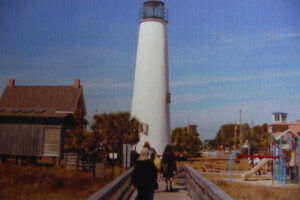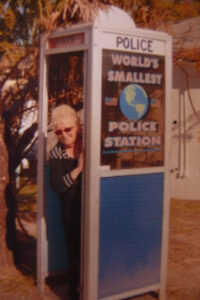03 Aug Nature’s Side of Florida

Author: Ronnie Greenberg
Photos by: Joe Hilbers
Ronnie Greenberg
5310 Dubois Ave
Woodland Hills, CA 91367
(818) 347-7437
mrg5310@aol.com
Franklin County
“Nature’s Side of Florida”
By: Ronnie Greenberg
Photos: Joe Hilbers
Embracing the nostalgic aura of an “Old Florida gem,” Franklin County calls to everyone in search of a place to relax and reconnect. The area represents nirvana for discerning anglers and wilderness lovers alike. Set on the Gulf of Mexico in Florida’s northwest panhandle, this “Forgotten Coast” with some 200 miles of shoreline, is noted for its pristine beaches, breathtaking peek at nature, and endless protected shallow bays and marshes. In addition to harvesting more than 90 percent of Florida’s oysters, there’s a treasure trove of local fresh and saltwater fish that include, clams, shrimp, blue crabs, speckled trout, flounder, redfish, red snapper, mahi-mahi, grouper, cobia, amberjack, striped bass, tarpon, whiting, Spanish mackerel and wahoo. Local marinas provide deep water access to the Gulf of Mexico and dozens of experienced local charter fishing guides customize their services to fit the needs and special requests of anglers.
Flora and fauna here include the world’s largest natural stand of Tupelo trees; the world’s largest concentration of native pitcher plants; a one-of-a-kind dwarf cypress swamp and no shortage of endangered and threatened species, including the Florida black bear, jaguarondi, gopher tortoise, red cockaded woodpecker, indigo snake, West Indian manatee and more.
The area encompasses the coastal communities of Apalachicola, Carrabelle, Alligator Point, and the barrier islands of Dog, Eastpoint, St. George and St. Vincent.
Apalachicola rich with history and maritime culture, sits at the mouth of the Apalachicola River, just across the Apalachicola Bay. In the late 19th and 20th century Apalachicola was a bustling river seaport exporting cotton and lumber, along with a rapidly growing sponge trade and fishing industry. Lumber and cotton magnates built luxurious mansions and today more than 200 historic homes and buildings, cotton warehouses and a sponge exchange dating from the 1830s are listed on the National Register.
 Historic Apalachicola Olde Town has cultivated its colorful heritage of preserve as an authentic working fishing town. Shoppers flock to downtown Apalachicola for great finds at locally owned one-of-a-kind boutiques, galleries and antique shops. There are more than 20 fine art galleries, upscale home interior shops, clothing and gift boutiques. This venue for the arts is also a culinary destination, with local restaurants ranging from innovative coastal cuisine, to funky ‘come as you are” oyster joints serving the world-famous Apalachicola Bay oysters. The unique Dixie Theatre that was the entertainment center of the county back in 1912 is now fully renovated and hosting live professional theater and music performances. www.DixieTheatre.com
Historic Apalachicola Olde Town has cultivated its colorful heritage of preserve as an authentic working fishing town. Shoppers flock to downtown Apalachicola for great finds at locally owned one-of-a-kind boutiques, galleries and antique shops. There are more than 20 fine art galleries, upscale home interior shops, clothing and gift boutiques. This venue for the arts is also a culinary destination, with local restaurants ranging from innovative coastal cuisine, to funky ‘come as you are” oyster joints serving the world-famous Apalachicola Bay oysters. The unique Dixie Theatre that was the entertainment center of the county back in 1912 is now fully renovated and hosting live professional theater and music performances. www.DixieTheatre.com
Parks and Wildlife Sanctuaries- Tour the brand new Apalachicola National Estuarine Research Reserve visitor center which monitors over 246,000 acres in the Apalachicola Bay estuarine system. Exhibits here showcase the flora and fauna of the area, an aviary and live giant fish tanks. Apalachicola National Forest a 564,000 acre-park is perfect for picnicking, boating and fishing.
Unpack your bags at the Water Street Hotel and Marina, Apalachicola’s new luxury condominium hotel on Scipio Creek. Get up close and personal with the wild life attracted to the brackish waters right outside your screened verandah. You will encounter many types of birds and animals including egrets, ospreys, pelicans, dolphins and yes, alligators. There are 30 suites and a 20-slip marina and swimming pool, and Mary Erickson’s original paintings are an integral part of every unit. Located at 329 Water Street, phone (888) 211-9239 www.waterstreethotel.com
 Carrabelle – Whether you come to land “the big catch” on a fishing excursion, set sail into a glorious sunset, snorkel, scuba dive, scallop, bird watch or just get away from it all along the miles of white sand beaches, Carrabelle welcomes you to their boater’s and fisherman’s paradise. Located on St. James Island, it’s surrounded by bays, rivers, and an off shore island known as Dog Island. Signature attractions include: Tate’s Hell State Forest best known for its expanse of wetland prairie and flatwood topography is home to the Dwarf Cypress Swamp and vast pitcher plant prairies. It also supports an abundance of endangered and threatened species. Canoeing, kayaking, boating and fishing are available along the park’s 35 miles of rivers, streams and creeks. Crooked River Lighthouse a 112 year old lighthouse built on the Florida mainland in 1895 to replace the one on Dog Island was destroyed in a hurricane in 1873 and fully restored and relit in 2007. It has a Keeper’s house, museum, gift shop and park. www.crookedriverlighthouse.org Camp Gordon Johnston World War II Museum dedicated to the 250,000 amphibious World War II soldiers and support groups who trained at the Carrabelle site (the beaches and island were ideal for amphibious training). For many it was the last stopover for those going to the Pacific or European theaters. Explore their history through photographs, slides, and artifact displays www.campgordonjohnston.com Also make sure to stop for a photo op at the world’s “smallest police station,”
Carrabelle – Whether you come to land “the big catch” on a fishing excursion, set sail into a glorious sunset, snorkel, scuba dive, scallop, bird watch or just get away from it all along the miles of white sand beaches, Carrabelle welcomes you to their boater’s and fisherman’s paradise. Located on St. James Island, it’s surrounded by bays, rivers, and an off shore island known as Dog Island. Signature attractions include: Tate’s Hell State Forest best known for its expanse of wetland prairie and flatwood topography is home to the Dwarf Cypress Swamp and vast pitcher plant prairies. It also supports an abundance of endangered and threatened species. Canoeing, kayaking, boating and fishing are available along the park’s 35 miles of rivers, streams and creeks. Crooked River Lighthouse a 112 year old lighthouse built on the Florida mainland in 1895 to replace the one on Dog Island was destroyed in a hurricane in 1873 and fully restored and relit in 2007. It has a Keeper’s house, museum, gift shop and park. www.crookedriverlighthouse.org Camp Gordon Johnston World War II Museum dedicated to the 250,000 amphibious World War II soldiers and support groups who trained at the Carrabelle site (the beaches and island were ideal for amphibious training). For many it was the last stopover for those going to the Pacific or European theaters. Explore their history through photographs, slides, and artifact displays www.campgordonjohnston.com Also make sure to stop for a photo op at the world’s “smallest police station,”  which is a phone booth.
which is a phone booth.
Alligator Point, a secluded and tranquil peninsula at the eastern end of Franklin County encompasses the 14,366-acre Alligator Harbor Aquatic Reserve and a 4,800 acre Bald Point State Park. A refuge for wildlife and a top migratory area for birds, Alligator Harbor also is one of the world’s largest feeding grounds for the Kemp’s Ridley sea turtles, which is the rarest and most endangered of all marine turtles.
St George Island, a 28 mile barrier island that is approximately 28 miles long and two miles wide, stakes claim to some of the most beautifully pristine beaches in all of Florida on the Gulf side, and the life-abundant waters of the Apalachicola Bay on the other. St. George Island State Park comprises nine miles of undeveloped shoreline, and features some of the state’s best shelling opportunities. Magnificent dunes, protected coves, salt marshes and long-leaf pine forest create an environment that encourages wildlife exploration whether kayaking the marsh coves, exploring the forest and beach trails, or surf-casting along the shore. Tour the St. George Island Visitors Center and Lighthouse Museum and Keeper’s House. The Lighthouse built in 1852 stood on Little St. George Island for more than 150 years before collapsing in the surf in 2005. Preserved bricks and original pieces of the iron lantern room served as pattern for the lighthouse reconstruction. www.seestgeorgeisland.com
For additional information contact: www.franklincountyflorida.com
An Estuary – where fresh and saltwater mix, wetlands usually found where rivers meet the sea. Estuaries are home to unique plant and animal communities that have adapted to brackish water – a mixture of fresh water draining from the land salty seawater. The Chesapeake Bay is the largest estuary in the United States. There are more than 100 of these water bodies along the coast of the U.S.




Sorry, the comment form is closed at this time.